Holiday 2015 Law Library Reading List

My favorite line from the book reviews in the 2015 Holiday Book List comes from Natalia Levy, Age 10 – “I would recommend this book to people who like sad moments and happy endings.” Doesn’t that say it all about the books that we love. In an increasingly fraught world, we here at the Law Library wish you a joyous holiday season and a year ahead chock full of happy endings.
Thanks to our many contributors, big and small, from throughout the Law School community.
This 2015 Law Library Holiday Book List is dedicated to the memory of our dear friend and colleague Lisa de Carbonel.
The UC Berkeley School of Law Library
- All About Love by bell hooks
- Baking Chez Moi by Dorie Greenspan
- The Big Book of Christmas Mysteries, edited by Otto Penzler
- Bill Bruford: the Autobiography: Yes, King Crimson, Earthworks, and More by Bill Bruford
- The Bone Clocks by David Mitchell
- Cyteen by C.J. Cheryh
- Dead Wake: The Last Crossing of the Lusitania by Erik Larson
- Dear Committee Members by Julie Schumacher
- Deep South by Paul Theroux
- Destiny Disrupted by Tamin Ansary
- El Deafo by Cece Bell
- Flatland: A Romance of Many Dimensions by Edwin A. Abbott
- Foucault's Pendulum by Umberto Eco
- Geronimo Stilton, The Phoenix of Destiny: An Epic Kingdom of Fantasy Adventure by Geronimo Stilton
- The Girl with a Clock for a Heart by Peter Swanson
- The Greater Journey: Americans in Paris (Audio Book) by David McCullough
- Home Cooking and More Home Cooking by Laurie Colwin
- Little Blue Truck by Alice Schertle, Illustrated by Jill McElmurry
- The Palliser Novels by Anthony Trollope
- The Power of the Dog and The Cartel: A Novel by Don Winslow
- Reckless: My Life as a Pretender by Chrissie Hynde
- Rosa by Jonathan Rabb
- The Truth According to Us by Annie Barrows
- We Are in a Book by Mo Willems
- The Winning Garden by Leann Smith & Kip Richmond
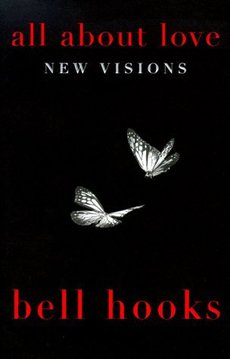
All About Love
by bell hooks
Clara Beatrice Hammond-OakleyLaw Student
I have never read a self-help book before. I always thought they were either for that particular kind of anxious hippie who tries to buy spiritual well-being or for Bridget Jones-esque singletons who I thought had disappeared in 2002. I certainly did not think that bell hooks, the radical activist and thinker bell hooks, read self-help books. But after reading her book All About Love, I have realized how first-wave feminist and narrow minded that was of me.
bell hooks has read a lot of self-help books, and from them and from her own intersectionality and anti-oppression work, she has written the most beautiful meditation on how to improve yourself, your community, and every life you touch. Her message is that love, real radical love unlike anything that is seen in How To Lose A Guy or You've Got Mail, can get you more than a man. It can change the world and your place in it.
And this book did change the way I interacted with the world. For example, I visited my friend's work, which is a small house where a few severely developmentally disabled men live and are cared for by a large staff. The outfit is paid for entirely by donations. Usually, my first thought would be this is great and my second would be that, economically, it is totally impractical and then I would get all sad about how it can't last and certainly can't be scaled up. However, after reading bell hooks I realized that we don't take care of people simply to balance some economic spreadsheet, but instead because compassion and happiness is a benefit in and of itself. The men living in those homes were so happy and safe, and the people who worked there were also full of joy. That is the kind of public good that our government should jumping to fund. bell hooks made me able to imagine an economy based around production of love, rather than material resources.
Another example of the power of bell hooks is that right after I read the section about building a loving community, a drunk man started talking to me on the subway and in my post-bell hooks glow I indulged him in conversation for almost thirty minutes, in which he mostly focused on the question of whether all feminists are or are not lesbians. I patiently engaged him, trying the whole time to be thoughtful and present. A few weeks later, I think I have finally slide a bit back towards my pre-bell hooks worldview and would tell that particular guy to shove it, but it was a lovely feeling while it lasted.

Baking Chez Moi
by Dorie Greenspan
Ellen GilmoreReference Librarian
What more could you ask for at the holidays than a coffee table book you’ll actually want to read and use? Award winning cookbook author Dorie Greenspan lives part time in Paris and has collaborated with famous chefs such as Julia Child. She wrote Baking Chez Moi to feature recipes that the French bake at home for their families and close friends. These are not the time-consuming, elaborate recipes that most of us associate with French desserts. According to Greenspan, “real French people...don’t bake anything complicated, finicky, tricky, or unreliable.” She tells the story of spending all day preparing a fancy layered and decorated chocolate cake to serve to her French friends, who asked where she bought it. When she replied that she made it there was just one response: Why?
Greenspan’s informative, clearly written recipes have a chatty tone, are fun to read, and are very easy to follow. They include useful tips, storage instructions, and “bonne idees”, which are suggestions for variations to the recipes such as including a glaze or topping or adding liqueur, spices, or nuts.
I enjoy recipes that are easy to make but contain something a little bit out of the ordinary. My favorite examples in this book include adding melted white chocolate and coffee to the marble cake (it’s delicious), or browning the butter before adding it to the peach “tourte”.
Baking Chez Moi is the perfect gift for Francophiles and dessert lovers. Or better yet, buy one for your own coffee table and enjoy the wonderful aroma that will fill your house when you bake one of these delicious sweets.
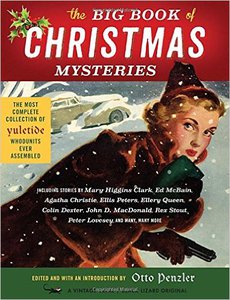
The Big Book of Christmas Mysteries
edited by Otto Penzler
Edna LewisReference Librarian
Edgar award winning editor Otto Penzler, proprietor of Manhattan's famous Mysterious Bookshop, has collected sixty of his favorite holiday themed mysteries. Many of the stories are rarely published and run the gamut from classic authors like Sir Arthur Conan Doyle, Thomas Hardy, and Robert Louis Stevenson to contemporary authors such as Mary Higgins Clark, Ed McBain and Donald E. Westlake. All of your favorite detectives are here as well - Sherlock Holmes, Rumpole of the Bailey, Hercule Poirot, Inspector Morse - to name just a few. There is literally something for everyone - police procedural, cozy, suspense, private eye. Many of these stories are quite funny as well making them the perfect holiday break read. My book group selected this for our December read on the theory that no matter how busy you are with holiday madness you could read at least one great mystery story. A word to the wise though - at a whopping 674 pages you might want to consider reading this digitally.
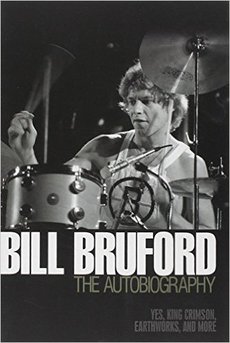
Bill Bruford: the Autobiography: Yes, King Crimson, Earthworks, and More
by Bill Bruford
Dean C. RowanDirector, Reference & Research Services
For readers of a certain age and very likely gender, too, Bill Bruford is a rock god. His career as a drummer with multiple groups and on countless recordings spans forty years beginning in the ‘60s, when he founded the iconic British progressive rock band Yes. He is the first drummer I remember hearing as an equal among musicians in the band, not merely the reliable timekeeper. His 2009 autobiography sadly coincides and culminates with his decision to retire as a public musician, but fans are treated to a 350-page apologia for the drastic step. It’s a persuasive, honest account, if one rarely related chronologically. Instead, each chapter invokes a theme on which Bruford elaborates, mingling biographical data, personal confession, and armchair (or drum throne) history and philosophy lecture. In between accounts of tense rehearsals, hasty road trips to gigs, inept managers, hitchhiking gone awry, and wickedly talented colleagues, Bruford inserts here a history of recording technology, there an excursus on musical genres. The detours are no mere padding: his life is music and perpetual navigation of the industry that serves it up. For a rock star, he has lived a surprisingly clean life, devoted in equal measure to art and domesticity, which anchored him during crises. The book is not a sordid celebrity tell-all. It’s an extended exercise in disciplined self-reflection. For Bruford this entails intense scrutiny of the music business, which he righteously despises, even while he acknowledges that it and a bit of luck propelled his career. He freely displays his self-doubt as a musician, spouse, parent, and businessman, but he also accepts that he has worked hard to earn worldly and even occasional transcendental rewards, for example, the live performance that “clicks” for everybody at once: the musician himself, his performing colleagues, and the paying audience. Bruford isn’t a born artist in prose, but like his musicianship, his writing is distinctive and inviting. The book is required reading for fans of Yes, King Crimson, and Bruford’s many projects, but struggling musicians who have never heard of him stand to learn a lot about the history of their chosen profession.
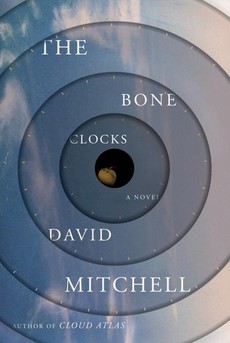
The Bone Clocks
by David Mitchell
Amy UtsteinDirector of Administration, Berkeley Law Clinical Program
Without a doubt The Bone Clocks was the best book I read last year. David Mitchell also wrote Cloud Atlas and this book is similar in that there are six loosely-connected, stories that make up the novel. The different sections of the novel span genre and travel through time in a most entertaining way and showcase Mitchell's amazing talent. Enjoy!
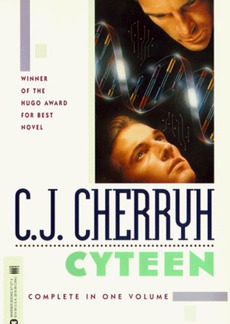
Cyteen
by C.J. Cheryh
Clara Beatrice Hammond-OakleyLaw Student
We are in the way future. A massive expansion into space has occurred. A hundred years earlier, the Earth government had lost control of its far flung stations and a loose confederation of asteroids and planets called Cyteen formed.
A lot of the plot this book is about the dullest sort of political posturing. Everyone is always playing really complicated mind games on each other that frankly I did not follow or care about. The real star of this show is through space and the homes that humans have made in it, described not directly but instead slowly and incidentally through the plot. Cheryh doesn't explain how clones are birthed, instead she (yes, the author is a she!) has little clone children run through the birthing facilities and reminisce fondly about their upbringing. She has characters get upset and take themselves down to get tape, which realigns their deep neural structures. The worries, hopes, and emotions of the characters all combine to teach the reader about the world. It’s hard enough to world build. It’s even harder to not blow your load and instantly start railing off long descriptions of how cool your new world is and instead to let readers discover it themselves.
Another thing I love about this book is that the author imagined a world where we had faster than light space travel, cloning, and could live to be a hundred and sixty years old, but she still has everyone using tapes. Real, physical tapes that you have to check out of a library. They are always worrying about how much space the tapes take up, how you can't get to a tape because it’s been stored in some huge bunker, etc. I don't think this was an intentional move. Instead, I think it was just that hard to imagine data storage like we have now, where I can buy a 60's supercomputer's worth of storage in the shape of a plastic turtle for under ten dollars. So even though we can't travel faster than light, this book allowed me to console myself that we are excelling in other areas.

Dead Wake: The Last Crossing of the Lusitania
by Erik Larson
Marci HoffmanAssociate Director & International and Foreign Law Collections
As stated in the subtitle, this book is about the Lusitania (duh). While I recall learning about this disaster when I was in school in the dark ages (after the Lusitania and before the Internet), I really didn’t know too much about the particulars. For those of you who have no clue what this book is about, here is a two-sentence summary: In May 1915, this luxury ocean liner called the Lusitania was bound for Liverpool from New York and was sunk by a German U-boat. It sank in 18 minutes just 11 miles off of Ireland and 1,198 passengers and crew died. That’s it. No surprise endings, no changes to the basic facts.
While this is a fairly well-known documented event (the 100th anniversary of the sinking occurred this past May), this book is quite interesting and is a worthwhile read. Larson does a very good job covering all kinds of information about the structure and operations of the ship, the captain and crew, the passengers (in all classes), and the politics of the time (this happened 10 months into World War I). I never had any idea of the involvement of the British intelligence unit (Room 40) and the British Admiralty (including Churchill), President Woodrow Wilson’s personal drama, the rather wretched life on board German U-boats, and the ship owner’s (Cunard Lines) ignorance and mishandling of events (especially since the Titanic sunk just three year earlier). You will have to read the book to learn about this stuff!
Many fascinating tidbits about the people involved in this event came out of Larson’s research. The Lusitania’s captain, William Thomas Turner, and the U-boat commander, Walther Schwieger, are covered well as are some of the more famous passengers including the book dealer Charles Lauriat and one of the first American women architects, Theodate Pope Riddle. Larson also details the amazing efforts of the Irish coroner (John J. Horgan) who led the inquiry into the deaths of the 1,198 people. He also led the inquest into the sinking and exonerated Turner.
Many critics say that this book doesn’t shed any new light or information on this incident. Since the information was new to me, I cannot comment on these claims. If you find yourself needing an escape over the holidays, take a trip on the Lusitania (the book is available in the library) -- bring a life vest.
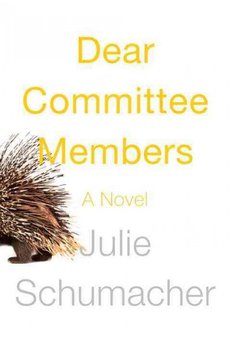
Dear Committee Members
by Julie Schumacher
Patricia HurleyLecturer in Residence; First Year Skills Program
Dear Boalt Sub- Committee of Those Who Read for Pleasure,
I strongly recommend the epistolary novel Dear Committee Members by Julie Schumacher.
Ms. Schumacher manages to convey the personal struggles and mostly- dashed dreams of her protagonist through the surprising construct of his recommendation letters.
Professor Jay Fitger is a devoted curmudgeon who toils away in the remains of a neglected English department. His students request piles of recommendation letters for dwindling jobs and fellowships. He also takes it upon himself to write unanswered correspondence to the college administrators, demanding to know, for example, why the new head of the English department is a sociology professor.
If you doubt that a novel written only in this form can be compelling, let me employ the refreshing candor which sets Jay's letters apart: You will love this book if you play any role whatsoever in the production of recommendation letters (and isn't that most of us in this building?) Whether it is your role to request letters, to write them, to format and process them or even to read them, the edgy wit, woeful observations and endearing compassion of Jay Fitger will make you rethink the whole enterprise.
Perhaps we should all employ the unfiltered honesty that make Jay's letters so delightful to read and so effective at illuminating the underlying goodness of their cranky author.
I wholeheartedly endorse this book. You will not be disappointed in its ability to shed humor and light on this cyclical and daunting task, as well as on academia itself.
In Solidarity with all who Search for the Right Adjective,
Trish Hurley
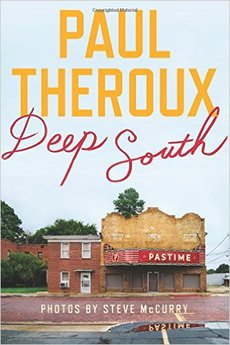
Deep South
by Paul Theroux
Ellen GilmoreReference Librarian
Having written many books chronicling his adventures traveling the world, New England native Paul Theroux turns his attention to the southern United States in his most recent work, Deep South. He is not interested in tourist destinations like Charleston or Savannah or in the mythologized South, but rather the “smaller places and huddled towns”, the rural South where he is struck repeatedly by the poverty and its similarities to the despair and hopelessness he witnessed in Africa and Asia. He is appalled at all the aid money our government and private charities give to foreign countries but not to its own citizens.
Theroux seeks out residents’ stories by visiting black churches, gun shows, social-service organizations, and homey diners with names like “O Taste and See”. He examines the legacy of slavery and Jim Crow, and the impact on rural communities of the loss of manufacturing plants and the outsourcing of jobs. He relishes the kindness and hospitality that strangers almost unfailingly extend to him, and he admires their resilience and dignity. In describing his journey he writes that “the vitality of the South lies in the self-awareness of its deeply rooted people. What made the South an enlightenment for a traveler like me, more interested in conversation than sightseeing, was the heart and soul of its family narratives - its human wealth”.
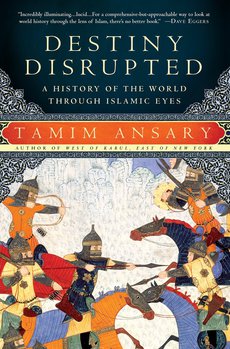
Destiny Disrupted
by Tamin Ansary
Robert C. Berring, Jr.Walter Perry Johnson Professor of Law
Most Westerners know very little about the history of the Islamic World. While we grew up hearing tales drawn from the Bible and learning the histories of Rome and Greece, there was another empire existing in parallel. It is peopled with heroes, villains and dreamers. We do not know these stories- they are not part of our lives. Tamin Ansary, raised in a religious family, came to the United States where he has made his life as a textbook writer and editor. He has lived a secular life, becoming a creature of two worlds. He decided to tell the stories of the world in which he grew up. Having spent a life writing high school textbooks, he uses sources well, but he writes with an informality that holds one’s attention. At times one goes into sensory overload, but he pulls you back. If you want to gain an understanding of the world as it is seen in this other empire, this is a book for you.
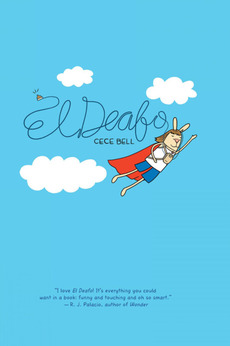
El Deafo
by Cece Bell, Ages 8-12
Natalia Levy 4th Grade, Peralta Elementary School, Oakland
The main character in Cece Bell’s book, El Deafo, is named Cece Bell. She was a different kid because she had a disability. People call this disability deafness. Cece was singing one day then out of nowhere she started to throw up. Her parents rushed Cece to the hospital and they asked the doctor what illness Cece had. After all the shots and measuring of her head, the doctor said she had meningitis. A few days later she couldn’t hear, then she knew that she was deaf. She had a hearing test and she got some hearing aids. El Deafo is a super hero’s name. Cece made this hero up because she wanted to be strong and tell people hearing aids don’t mean she is a baby. Will Cece be able to make friends?
The message in this book is all people can change. Cece’s problem was that she was deaf and she felt left out and so small like she just wanted to be in a different world. Martha, Cece’s friend, is special because she makes Cece feel like hearing aids are nothing and that they are just like having normal ears. Martha didn’t speak slowly, Martha didn’t speak loudly. She made Cece feel like a normal person.
Cece did something that made herself feel strong. When the class was playing while the teacher was out of the room, she heard with her phonic ear that the teacher was coming back to the class. Cece knew that she had to do something, so she told her classmates that the teacher was coming back. They were happy. Cece said: “For so long, I’ve wished that I could hear like they do. But I have something they don’t have - superpowers!”
I like this book because Cece had a really hard life and she was brave enough to tell this story to other people. I would recommend this book to people who like sad moments and happy endings.
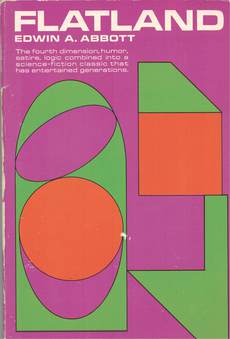
Flatland: A Romance of Many Dimensions
by Edwin A. Abbott
Joe CeraLegal Research Librarian for Information Technology & Scholarly Communications
I started reading this book because many great Science Fiction writers reference it as an important influence. The introduction to the text (this was not the first edition) apologized for the discussion of women in the text and attempted some sort of justification for the language used. At this point I had to check when the book was originally written and discovered that it was first written in 1884. I also discovered that Edwin A. Abbott's middle name happens to be Abbott. None of these things stopped me from continuing reading but I was prepared for the worst - this was 44 years before women's votes were equal to men's votes in the UK where this was written. Women are not represented well and that should be a lesson for anyone hoping to write something that stands the test of time - don't be a jerk.
The book is about a square that lives in a 2-dimensional world. There are also lines, triangles, other squares, polygons close to circles, and circles. The narrating square addresses the reader directly and gives some background about Flatland. The shapes have various duties and responsibilities and the political and economic system definitely favors more sides and better symmetry (a circle arguably has an infinite number of sides and has perfect symmetry). He discusses how the different shapes distinguish each other since all 2-D shapes would appear as lines on a flat surface - imagine placing a bunch of shapes on the desk in front of you and they can only 'look' along the surface of the desk.
In a dream the square visits Pointland where all the inhabitants live on a straight line and are aware of other inhabitants but can only 'see' the two inhabitants on either side of them. He is later visited by a sphere that shows the square what Flatland looks like in 3-dimensions. The square is basically a jerk to the sphere and demands to see the sphere's insides (it kind of makes sense in the book). It all ends suddenly - probably because Edwin has made his point and decides the book is long enough.
In the end, the concept of the book is great and I can see how it inspired many Science Fiction writers. However, if you can't get past the disrespect of women in the late 19th century, this will be a tough read. I will summarize the moral of the story for you and then you can participate in any conversation that happens to involve the book: We are limited by our surroundings, what we can 'see' and what we consider normal. It's possible that there are things that we don't understand and we shouldn't think anyone who believes something different than us is crazy. There's some irony in there, I'm sure of it.
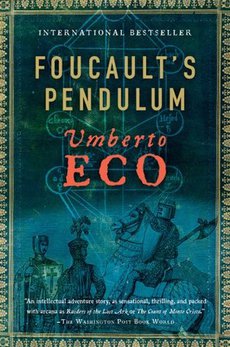
Foucault's Pendulum
by Umberto Eco
Joe CeraLegal Research Librarian for Information Technology & Scholarly Communications
The summary of this book involves Knights Templar, a hoax, and occult groups. It sounds very interesting and I planned to be entertained for the 600-some pages of the book. What this book is about is not important. What is important is the lesson that I learned from this book. I learned that I don't need to finish a book that is not entertaining me. After reading about 100 pages, I thought I was just about to get to the good part. I felt the same way after reading 200 pages. By the time I hit 400 pages I was committed to finishing the book because I always finished books that I read. I finished the book and immediately regretted the time wasted reading a book that I didn't enjoy. While I couldn't tell you anything about the plot (even reading the summary made me think that this is something I would enjoy reading) I can tell you that, since this book, I always stop reading a book once I think I've given it a fair chance and it has squandered that chance.
Reading for pleasure is supposed to be enjoyed. Many of us end up putting off reading generally when we read things that we aren't enjoying because we feel like we have to finish that disappointing book. Authors are not keeping track of how many people start their book and don't finish it unless you tell everyone on Twitter and you are incredibly popular. If that is your situation, maybe don't tell everyone on Twitter.

Geronimo Stilton, The Phoenix of Destiny: An Epic Kingdom of Fantasy Adventure
by Geronimo Stilton Ages 7-10
Sebastian Rowan4th Grade, Ocean View Elementary, Albany
Geronimo Stilton, a mouse who lives on Mouse Island, was relaxing in his chair having a cup of tea. Suddenly, he noticed something in the fireplace. It looked familiar. It was the Phoenix of Destiny, a fiery bird from the Kingdom of Fantasies! Geronimo thought that he could only visit the Kingdom while he was sleeping. The Phoenix told Geronimo that the Queen needed to speak with him. They were off to the Kingdom of Fantasies! The Queen sent Geronimo on seven different treasure hunts without any maps, armor, or help, but he completed the tasks. He discovered that the person posing as the Queen was the real Queen’s sister, trying to keep the real Queen asleep forever. Geronimo saved the real Queen, who gave him a special key to allow him to visit the Kingdom at any time. The book was very fun to read. I can’t wait for the next one in the series to come out.
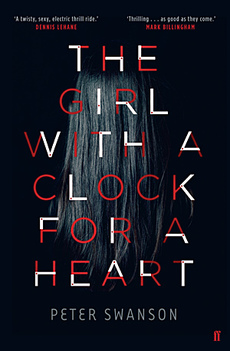
The Girl with a Clock for a Heart
by Peter Swanson
Robert C. Berring, Jr.Walter Perry Johnson Professor of Law
Once again I have chosen an obscure mystery novel. This one kept me turning the pages well into the night. Swanson writes with descriptive elegance about time and place. But what drove me on was the power of the passion of his central character and how one’s first crazy love lingers in the mind for years. Nor can one really determine who is the villain and who is the hero in this very twisted tale of deception. I have always been a sucker for stories about female characters who combine mystery and menace and this book has a beaut. Great ending too. This one is just for fun.
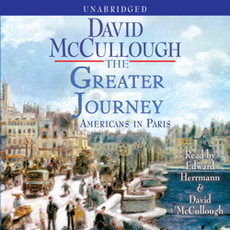
The Greater Journey: Americans in Paris (Audio Book)
by David McCullough
Marlene HarmonReference Librarian
Publisher: Simon & Schuster Audio
Narrated by Edward Herrmann
Listening Length: 16 hrs and 56 mins
David McCullough writes in The Greater Journey: Americans in Paris “Not all pioneers went west.” In the 1830s a trickle of determined and ambitious Americans headed east across the Atlantic to Paris. The trickle grew through the tumultuous nineteenth century. The generation that made the crossing in the 1830s included Charles Sumner, Oliver Wendell Holmes Sr., James Fenimore Cooper, George Healy and Samuel Morse. Two hundred years ago America was a provincial backwater surrounded by a vast wilderness and Paris was the epitome of the civilized world. Before they even reached Paris, the mere sight of the architectural glory of the Rouen Cathedral was enough to convince those first eastward bound pioneers that the dangerous Atlantic crossing had been worth it.
Charles Sumner, who came among other things to learn French, also learned that racism was an educated belief, and went on to vigorously oppose slavery in the United States. Oliver Wendell Holmes Sr. came to study medicine. George Healy and Samuel Morse came to learn to paint. Healy became a great success as a portrait painter. Morse achieved great success too, though as the inventor of the telegraph rather than as the painter he had aspired and trained to be.
McCullough skillfully weaves together his profiles of well and little known Americans with a biography of nineteenth century Paris itself, making for a fascinating and engaging whole, enhanced by the late Edward Herrmann’s comfortable narration. The well known Americans profiled include Ralph Waldo Emerson, Nathaniel Hawthorne, Harriet Beecher Stowe, George Catlin, Elizabeth Blackwell, John Singer Sargent and Mary Cassatt. Many spent their happiest days Paris. Portraits of lesser known figures include that of Elihu Washburne, U.S. Minister to France during the Franco-Prussian War and siege of Paris. Unlike every other major foreign diplomat, he refused to leave Paris, instead using all his resources to save and help anyone he could, regardless of nationality.
Listening to the descriptions of the Parisian sojourns of John Singer Sargent and Mary Cassatt in latter part of this audiobook, accompanied by a coffee table book or two of their paintings is an entirely satisfying way to wile away a winter afternoon. The Greater Journey is a beautiful reminder that Paris glows bright into the twenty first century.
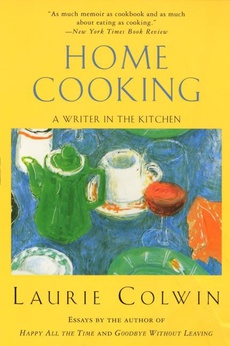
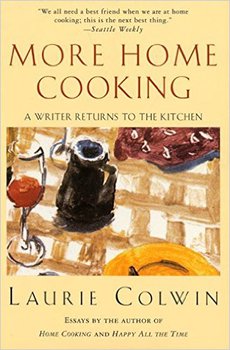
Home Cooking and More Home Cooking
by Laurie Colwin
Chris TarrHead of Cataloging
So much could be, and has been, written about Laurie Colwin, a novelist, short story writer and cookbook author who died much too young in 1992. She also wrote for Gourmet.
I read her novels (Passion and Affect (1974), Shine on, Bright and Dangerous Object (1975), Happy All the Time (1978), The Lone Pilgrim (1981), Family Happiness (1982), Another Marvelous Thing (1988)) in my mid-twenties, and they are pretty much about people like I was at the time only maybe a few years older – young women, from NY (possibly Connecticut), maybe married, maybe with children, trying to figure out what they’re going to do in life. I haven’t reread them, and I don’t know if I want to. I loved them so much then and would be sad if they don’t hold up.
Later, though, when I had children of my own, it was her cookbooks that I read, Home Cooking (1988) and More Home Cooking (1992 – published after she died). I think it’s More Home Cooking that I love best, particularly the chapter entitled “A Harried Cook’s Guide to Some Fast Food.” It is here that she develops “la cuisine de la ‘slobbe’ raffinee,” or ‘the cooking of the refined slob.”
“Take, for example, Roast Chicken, which is almost everyone’s favorite dish. I have never seen a menu outside of a vegetarian restaurant that does not list some variety or other of it. In the old days I used to slip herbs and savory things like porcini mushrooms under the skin and baste the chicken constantly, but I have gradually come to know that none of these things is necessary.
“The refined slob does not, for instance, even tie up her chicken. Her fancy imported linen kitchen string – which she bought at a snooty cooking shop at great expense and which was, she told her family, for trussing chicken only – has been purloined by her child, who has used it to make spider-webs by tying all the chairs together. Before I had a child, I would no more have cooked an untrussed chicken than I would have reused dead coffee grounds, but today I know an untrussed chicken is perfectly fine.”
This chapter also contains the world’s best brownie recipe -- Katharine Hepburn’s Brownies – which I and both my children know by heart and is really the only dessert recipe you need to know. Ah, but there is one other recipe that may be of some use to you this holiday season – the Nantucket Cranberry Pie (which is not from Nantucket, and also not a pie.) Here it is, adapted by a friend of mine.
Nantucket Cranberry Pie
- 2 cups chopped cranberries
- ½ cup chopped walnuts
- ½ cup sugar
- 2 eggs
- ¾ cup melted butter (1 and a half sticks)
- 1 cup sugar
- 1 cup flour
- 1 t. almond extract (or vanilla)
Gently mix the cranberries, walnuts and ½ cup sugar and spread in a 10-inch pie plate. Mix eggs, melted butter, 1 cup sugar, flour, and vanilla extract. Stir till smooth.
Pour over cranberry walnut mixture and bake for 40 minutes at 350 F. Happy holidays!
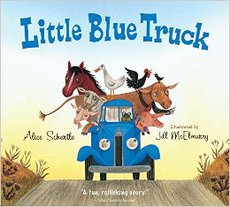
Little Blue Truck
by Alice Schertle, Illustrated by Jill McElmurry; Ages Baby and Up
Kira AbramsLaw Journals Administrator
Having a 13 month old, I find myself doing a lot of bedtime reading. Sometimes this consists of multiple books (up to 10 at one sitting), but a couple of months ago, it was comprised of reading one or the other of his 2 favorite books over and over (and over) again, at a single sitting.
One of these favorites was the Little Blue Truck. Fortunately, in addition to it being his favorite, I found that I loved it as well, making the telling and retelling (and retelling) of the book bearable. In fact, I've committed the entire book to memory and find it runs through my head regularly during the day and also at 4am during my insomniac mom moments.
The book tells the story (in rhyme) of Blue, friendly little blue truck, slowly making his way down a meandering country road taking the time to say hello or 'beep' to all the barnyard animals he meets along the way. They, in turn, all respond in kind to Blue in their animal ways. Suddenly a big self-important dump truck speeds past Blue and the perplexed animals, muttering he doesn't have the time of day to acknowledge, let alone say hello to all the silly animals on his route.
The truck ultimately gets stuck in a big muddy puddle, and upon calling for help, the animals ignore his pleas (with most excellent illustrations of expressions of nonchalance). The little blue truck, however, attempts to help the dump, and in doing so, gets stuck himself. When Blue calls for help, all of the animals eagerly run to his rescue, and after much pushing from each and every animal, with the final help of the little green toad, both trucks are freed. Teamwork reins.
The dump has an epiphany that kindness pays off by having friends who look out for you, and lend a helping hand in times of need. Taking the time to acknowledge even the smallest of beings ultimately is the right thing to do. Blue thanks all his animal friends, and they all jump inside and beep beep beep into the sunset.
In addition to having a great lesson of kindness, teamwork, and friendship, the rhyme scheme in the story is great, the illustrations are wonderful, and the reinforcement of the sounds the animals make goes a long way in making this a book worth reading and re-reading over and over (and you guessed it, over) again. I will definitely be purchasing this book as a gift for my friends with little ones. Very highly recommended!
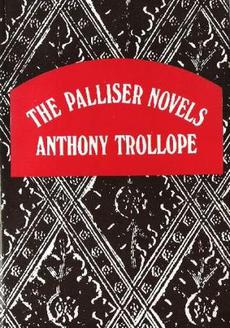
The Palliser Novels
by Anthony Trollope
William BenemannLibrary Archivist (ret.)
If El Niño packs the predicted wallop, this will be a good season to stay indoors bundled up with a nice cuppa and a few good Victorian novels. Boalties can do no better than the series of six books written by Anthony Trollope known collectively as The Palliser Novels, or The Parliamentary Novels. While Dickens allows Jarndyce v. Jarndyce to grind on in the background of Bleak House, Trollope in this series puts the law front and center. At times Phineas Finn reads almost like a British version of “How a Bill Becomes a Law,” and The Eustace Diamonds includes an actual points and authorities memo, prepared by one of Trollope’s solicitor acquaintances, on why a necklace cannot, under the law, be considered, in fact, a family heirloom. Trollope uses a broader canvas than Austen’s little bit (two inches wide) of ivory, has a more subtle grasp of human psychology than Dickens, and is able to craft a more elegant sentence of English prose than Thackeray. So put a fire in the hearth, brew yourself a pot of Earl Grey, and curl up with Mr. Trollope. El Niño be damned.

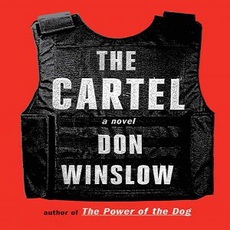
The Power of the Dog and The Cartel: A Novel
by Don Winslow
Michael LevyAssociate Director, Law Library; Lecturer in Residence
These novels come as a pair. The Power of the Dog was published in 2005, and The Cartel in 2015. While they exist as standalone books the reader will get more out of them by reading them in sequence. The novels cover the ongoing war on drugs by the United States and in particular the relationship with the drug trade and cartels in Mexico. Both novels are sprawling, with numerous finely drawn characters. It is a perfectly paced tale following DEA agent Art Keller pursuing drug kingpin Adan Barrera and his leadership of the Sinaloa Cartel. Winslow has taken on a prodigious amount of research for both books, which could almost be non-fiction journalistic accounts of what he sees as doomed government strategies both in the US and Mexico. However, be forewarned this is not for the faint of heart. The levels of violence and brutality are extreme but Winslow manages to avoid sheer gratuity as he weaves his complex and rewarding tale.

Reckless: My Life as a Pretender
by Chrissie Hynde
Monique MacauleyAcquisitions/Serials
I have to admit that I have a weakness for rock-n-roll biographies. They regale the reader with all the dirty details of sex, drugs, and the music. In Reckless: My Life as a Pretender, Chrissie Hynde does not hold back on any of these subjects. Drugs, bad choices in men, drugs, STDs, more drugs, oh did I mention drugs? It’s all in there, delivered in with a warts and all style. Frankly it’s amazing that she was ever able to make her career happen at all. If you are expecting to hear about her troubled marriage to The Kinks lead singer Ray Davies, you will be disappointed. What is unusual about this particular book is that it follows Chrissie’s life up till her band, The Pretenders, is formed and ends with the death of two of the founding members. This seems like an apt place to end as it seems that her recklessness ends there too. Narrative is a tad disjointed and if you don’t know that much about the punk scene in England in the 1970s then you may be a little lost. It’s still a fun read and good for some light reading over the winter break. Located in the library’s non-fiction section you should check it out!

Rosa
by Jonathan Rabb
Edna LewisReference Librarian
Set against the backdrop of the political upheaval in post-WWI Berlin, Rabb's noir mystery focuses on the actual disappearance of the corpse of Marxist activist Rosa Luxemburg for a period of four months following her secret execution in January 1919. The fictional mystery centers on a series of murders of middle-aged women found with mysterious patterned carvings in their backs, in the fictional story one of which includes Luxemburg. Det. Insp. Nicholas Hoffher, a veteran of the Kriminalpolizei and his deputy, Hans Fichter, investigate the puzzling murders, and as they do become entwined in the devious workings of the Polpo (political police) as well as the political and economic chaos in Germany post war. This is one complicated, dark mystery and its ability to weave actual historical figures such as Albert Einstein and Luxemburg as well as early fascist organizers into the plot makes you feel that you are present at a pivotal moment in history. Hoffher himself is a conflicted, troubled figure, who serves as a perfect foil for the massive changes and intrigue happening around him (including the rising anti-Semitism as Hoffher’s mother is Jewish).
Rabb has written 2 equally well researched sequels to Rosa. Shadows and Light, set in 1927, investigates a murder at Germany's famous film studio Ufa (again including actual film figures such as Fritz Lang and Peter Lorre) with the murder plot tied to the brutal unstoppable rise of the Nazi Party. The final book, The Second Son, set in 1937, focuses on the war in Spain and Hoffer's two sons, one a fervent Nazi who hides his Jewish roots, and the other a war photographer who has taken up the socialist cause. Gripping reading about a tragic spiral in world history.

The Truth According to Us
by Annie Barrows
Ramona MartinezCirculation
I will admit that I was drawn to this title by the color of the book jacket – a pretty sky blue! That happens a lot with me. I was drawn to another book by the picture of a toy red fire truck on the cover. Getting beyond the aesthetics, the story was a bit slow to draw me in. There is a lot of stage-setting, the story takes place in 1938 in the fictional town of Macedonia, W.Va. We spend a lot of time meeting characters and figuring out who they are, how they are related, why they do the things they do. We get to a point where we have heard many vague references to a fire that happened almost 20 years prior. We learn scattered details of the story from many different perspectives. And this is where the title comes in. What is the truth? Who says? Why is it important? What is the fallout? I found myself relating to two of the female characters, a matriarch and her niece, both of whom suffer deeply as a consequence of a tragedy years in the past. But I also enjoyed getting to know the character who arrives in town to research and write a history of the town of Macedonia for its sesquicentennial. We find that many of the town’s “best” families cling to a story that paints Macedonia’s founder as a hero – probably a whitewash of what actually happened. We never learn the whole “truth” because … it is impossible to know the whole truth about anything. Ultimately, the book is the author’s interpretation of the story. Philosophers have been pondering “truth” for centuries. If you want to think some deep thoughts, start with this Britannica article on truth1 which states “In actual investigations, what tells people what to believe is not the world or the facts but how they interpret the world or select and conceptualize the facts.” It is good to remember that everyone on earth is a human – an imperfect being going through life selecting and conceptualizing facts (gathered through their own personal filter), forming beliefs and acting on them. For a more detailed review that focuses on the book and doesn’t go off on philosophical tangents, try this.
1. http://www.britannica.com/topic/truth-philosophy-and-logic
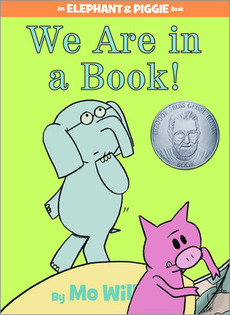
We Are in a Book
by Mo Willems, author & illustrator. Preschool-Kindergarten
I-Wei WangReference Librarian
Mo Willems is a f*cking genius. Unfortunately, he is an evil genius. He has turned crappy illustration—plus a wicked flair for appealing to both kid and grown-up humor—into an industry. He’s making bucketloads, and you, dear reader, are suffering for his art.
A prime example of Willems’ success is We Are in a Book, part of the Elephant and Piggie series. On the very first page (the back of the title page, actually), Piggie (who is a pig—that’s not a spoiler) is winking and giving a thumbs up, saying “Thanks!” … Quizzical, you proceed with the book.
It’s a thing of few and simple words, full of repetition with variation that’s great for the “pre-reader.” (That’s the technical term for what our three year-old does: memorizing a book, reading out the letters, and then faking reading the words—but really just reciting them from memory—is pre-reading. Sure.) It also breaks the fourth wall, which is a fun device and makes you reminisce about your English lit degree and using grown-up terms that don’t have to do with snacks or potty.
Spoiler alert: at the end of the book, Gerald (the elephant) asks the reader to read the book again. You go back to the beginning, and now, aha, you understand that very first page. You read through again and—not entirely surprisingly, this time—Gerald asks the reader to read the book again. Ho, ho, ho, Mr. Willems. Well done. Yes, indeed, well played, you miserable rat-bastard. Now … just explain once again how I’m supposed to get my kid to go the f*ck to sleep? (Yes, we have that one too.)
I could kill my sister-in-law for giving our child this book. If you have a niece or nephew, a grandkid, or any other kid in your life that you don’t have to read with frequently, I highly recommend this book. The kid will love the book. The kid’s parents ... well, they will casually hate you for a while, but you can just smile at them beatifically and tell them it’s so wonderful that their child is learning to love reading so much.
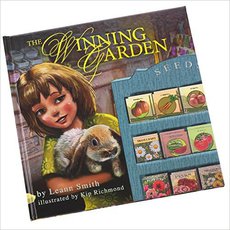
The Winning Garden
by Leann Smith, author & Kip Richmond, illustrator. Preschool-Kindergarten
I-Wei WangReference Librarian
Do not let this book into your house. You think that’s hyperbole, but it isn’t. Why would I go out of my way to review a book published—not just by a vanity press, but by a press the author had to start herself just to get the thing printed? Because it’s an insidious, crapulent pile of doo-doo that will sneak into your house and turn you into a vituperative, expletive-hissing bitch. After all, we received this book (in a gift set that includes seeds) as a birthday present for our three year-old, from a doting great-aunt who is my favorite among all my partner’s relatives …. And look what it’s done to me.1
The Winning Garden focuses on Willa White Wright, whose very first act is to throw a whiny tantrum in the local garden supply store (where her parents have apparently left her unattended) about not being allowed (because she never asked before) to enter the town’s annual gardening contest. The store is owned by Aunt Jemima Millie, an older African American woman who—aside from running her own business catering to the town’s competitive gardeners—has nothing better to than to assuage the hurt feelings of frustrated, spoiled white children2 whose parents have failed to spoon-feed them the opportunities to which they have been trained to feel themselves entitled. Willa’s emotional support animal, a lop-eared rabbit named Lulu, gets squeezed tightly but is not sufficiently comforting.
The townspeople who have traditionally dominated the competition are Professor Rosewood, who raises a formal flower garden in a stone brick3 wall-encircled estate (I guess faculty are pretty well-paid); and the Goodwins, whose organic farm harvests perfect snow peas, apples, and strawberries, all at the same time. Naturally, they give seeds and plants to the team of children that Willa assembles, because it wouldn’t be fair for the contest to be hard. Aunt Millie lets them use her garden plot (hey, at least she got some free labor out them). There is more whining and rabbit squeezing. A giant ladybug appears on most pages—a rip-off of Richard Scarry’s Goldbug. You can just guess what happens at the end. Spoiler: it involves more whining, emotional manipulation, simplistic homilies, and entitlement. What a surprise.
The problem is that the book is simply mediocre enough that a three year-old—even one who usually has pretty good taste—may fall for its bright colors and the happy premise of a place where everyone gives a sh*t about your whiney, entitled attitude. Your child will ask you to read it over and over, despite your pleas and obvious disgust. We hid the book, but the damn kid found it, and I cried real tears.
You can’t even hate-watch this crap.4 It’s so bad it makes you want to stab someone. Looking at the cover of this thing makes my skin crawl. I have an urge to vomit. I am not joking.
1 No, I was not always this way. The author/publisher seems like a perfectly lovely person, and is herself a mother and grandmother. But remember—Grendel had a mother too.
2 Why does it matter to me that the execrable illustrations (badly composed collages run through Photoshop’s “paint” filter) depict the town’s citizens as Hummel figurine versions of African-, Asian-,and mixed-ancestry Americans, but mostly as white people? Well, I don’t really think the racial politics of this stupid story are particularly relevant, but that’s just the mood the book puts me in. My partner put his finger on it when he compared the illustrations to The Watchtower.
3 It’s referred to as a stone wall, but it’s depicted as brick. I guess they didn’t have a picture of a stone wall to run through Photoshop. Um, editor? Hello?
4 Is there such a thing as hate-reading? Oh yes—see, e.g., the Olivia series, by Ian Falconer.